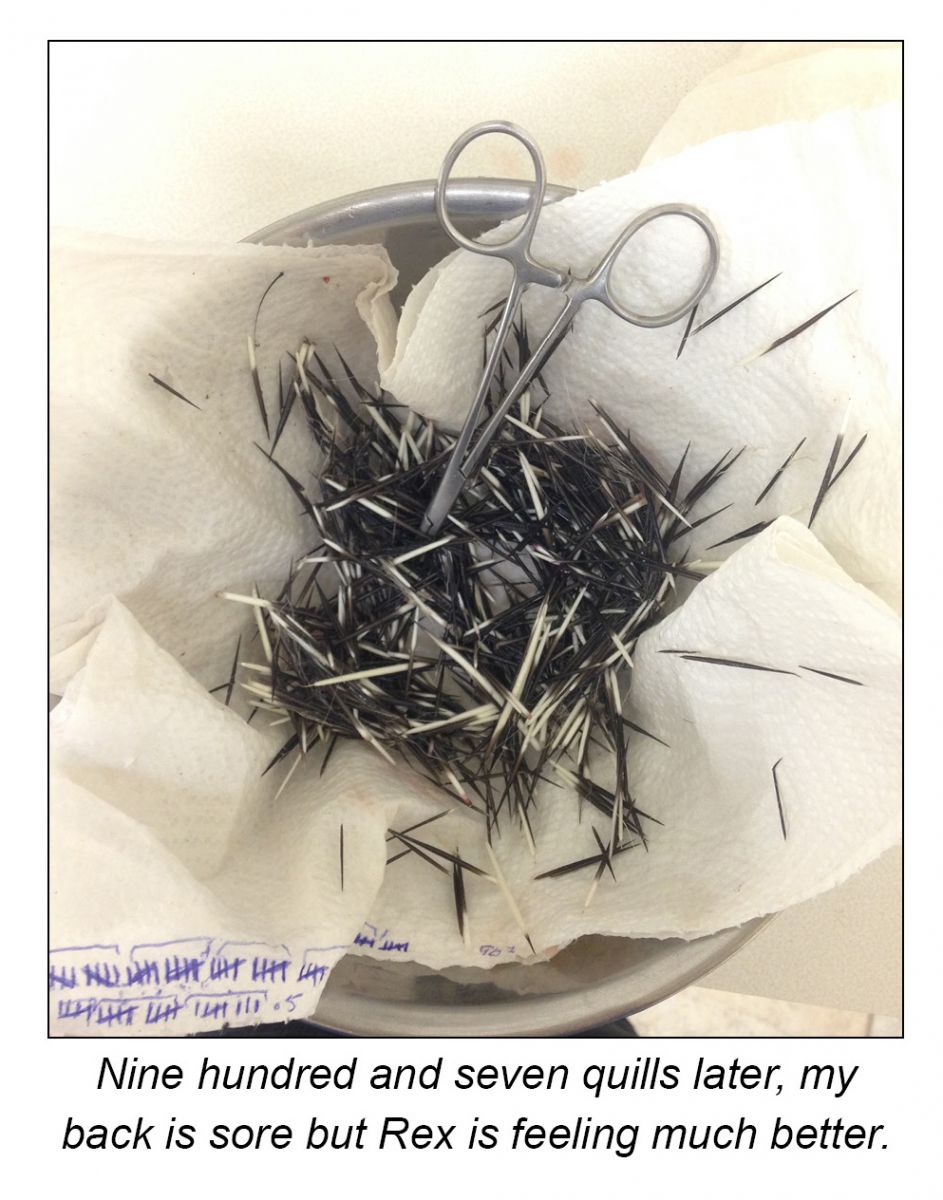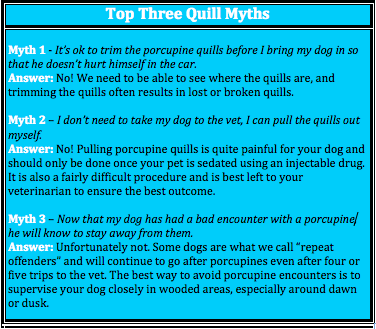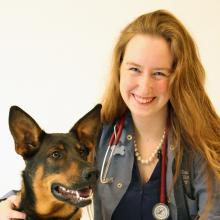Rex’s morning didn’t go exactly as planned. When his owners let him out for his morning pee and sniff around the yard, they certainly weren’t expecting anything exciting or out of the ordinary. But less than five minutes after letting Rex out, a great howling, painful cry echoed across the backyard and the knee-high Labrador/Corgi cross came bolting into the house shaking….and covered head to toe in quills.
While certainly not a dog’s proudest hour, being on the wrong end of a porcupine conversation is actually fairly common, especially in Northern Ontario. At Scott Veterinary, we usually see a “quill dog” at least once every two weeks. Any quill dog, no matter how many quills there are or how long it’s been since the incident, is considered an emergency at our clinic. We put appointments on hold so that we can evaluate the situation and begin treatment right away.
When Rex came to us, he was in a sorry state. He had quills on every leg, along his neck, completely covering his face, through his ears, even on his tail! He even had one quill that had pierced both of his eyelids on one side, holding the eye permanently shut! Poor Rex couldn’t even sit down but he was still happy to see us and wagged his quill-filled tail whenever we got close. His family - mom, dad and three kids – left him in our care and we quickly set to work.
.jpg)
The first step in dealing with a quill emergency is to sedate the patient with a calming drug injected into a muscle. It was a bit tricky to find a place to inject him under all the quills and even harder to hold him still because even his wagging tail was a weapon. Porcupine quills are spiked on both ends, so restraint must be done very carefully to avoid cranky veterinarians. Luckily, Rex barely felt the injection that we gave him since porcupine quills are about four times thicker than the needles that we use!
After Rex was sleepy enough, two vets, a tech and I grabbed our favourite pairs of hemostats (tiny pliers used for surgery) and set to work. There are three tricks to removing porcupine quills:
- They must be pulled straight out using steady pressure in the direction that they entered the dog;
- You must grab the quill as close to the skin a possible; and
- You must hold on to the skin around the quill with your other hand as you pull, otherwise you risk breaking the tip of the quill or pulling up a loose area of skin and burying the surrounding quills.
 We take a metal bowl (or two in Rex’s case) and fill it with water and paper towel to make it easy for us to shake the quills off the hemostats without touching them. Each vet picks an area of the dog’s body on which to work and set about feeling their way, inch by inch across the skin in search of quills. Some, like the ones sticking though Rex’s ears, are quite obvious and easy to remove. Others, like the forty or more quills stuck in his chin, have broken off near the surface and can only be found by feeling for tiny bumps. If any piece of quill is left behind, the body will respond to it and likely create an abscess. It is very important that we get every single quill out!
We take a metal bowl (or two in Rex’s case) and fill it with water and paper towel to make it easy for us to shake the quills off the hemostats without touching them. Each vet picks an area of the dog’s body on which to work and set about feeling their way, inch by inch across the skin in search of quills. Some, like the ones sticking though Rex’s ears, are quite obvious and easy to remove. Others, like the forty or more quills stuck in his chin, have broken off near the surface and can only be found by feeling for tiny bumps. If any piece of quill is left behind, the body will respond to it and likely create an abscess. It is very important that we get every single quill out!
The mantra that is quietly repeated around a group of vets working on a quill dog is “Please, dog, do not have opened your mouth”. Some dogs get off lucky and will have only been swiped by the porcupine’s heavy tail, which puts quills into their face and legs. Other dogs, the unlucky ones, will have for whatever reason tried to taste the porcupine and a result will have a mouth full of quills. Unfortunately for Rex, he fell into the second category. His mouth was so full of quills that every time his tongue moved another quill would fall out. Everywhere we looked - gums, beside the teeth, in the tongue, the roof of the mouth, the tonsils, everywhere – was chalk full of quills.
It took the four of us an hour and a half straight to remove all 907 quills from poor Rex. When he woke up a little while later, he was groggy but still very happy to see us. His first few steps he placed very timidly, afraid that there were still quills in his paws, but after four steps he bounced right out to the front desk and sat for a treat. Clearly he was showing no remorse for the worry he had put his family through and was eager to get back to his normal life. We ended up keeping him overnight, just in case there were more quills that showed up once the swelling went down (another 12 appeared!) and Rex was happily reunited with his family the next day. We waved him out the door and crossed our fingers, as we usually do, that we wouldn’t see him again until his vaccines were due.
 Minawaa giga-waabamin, until next week.
Minawaa giga-waabamin, until next week.
